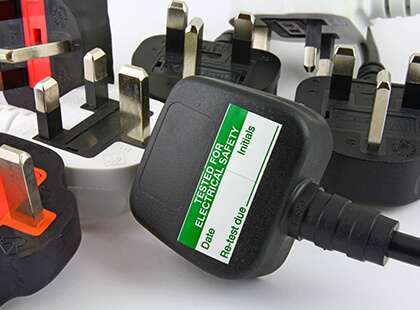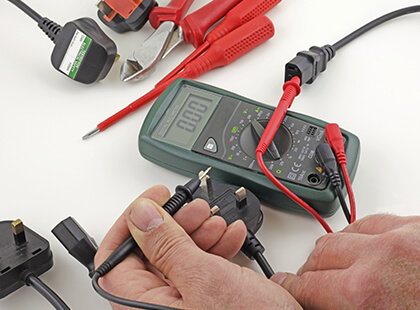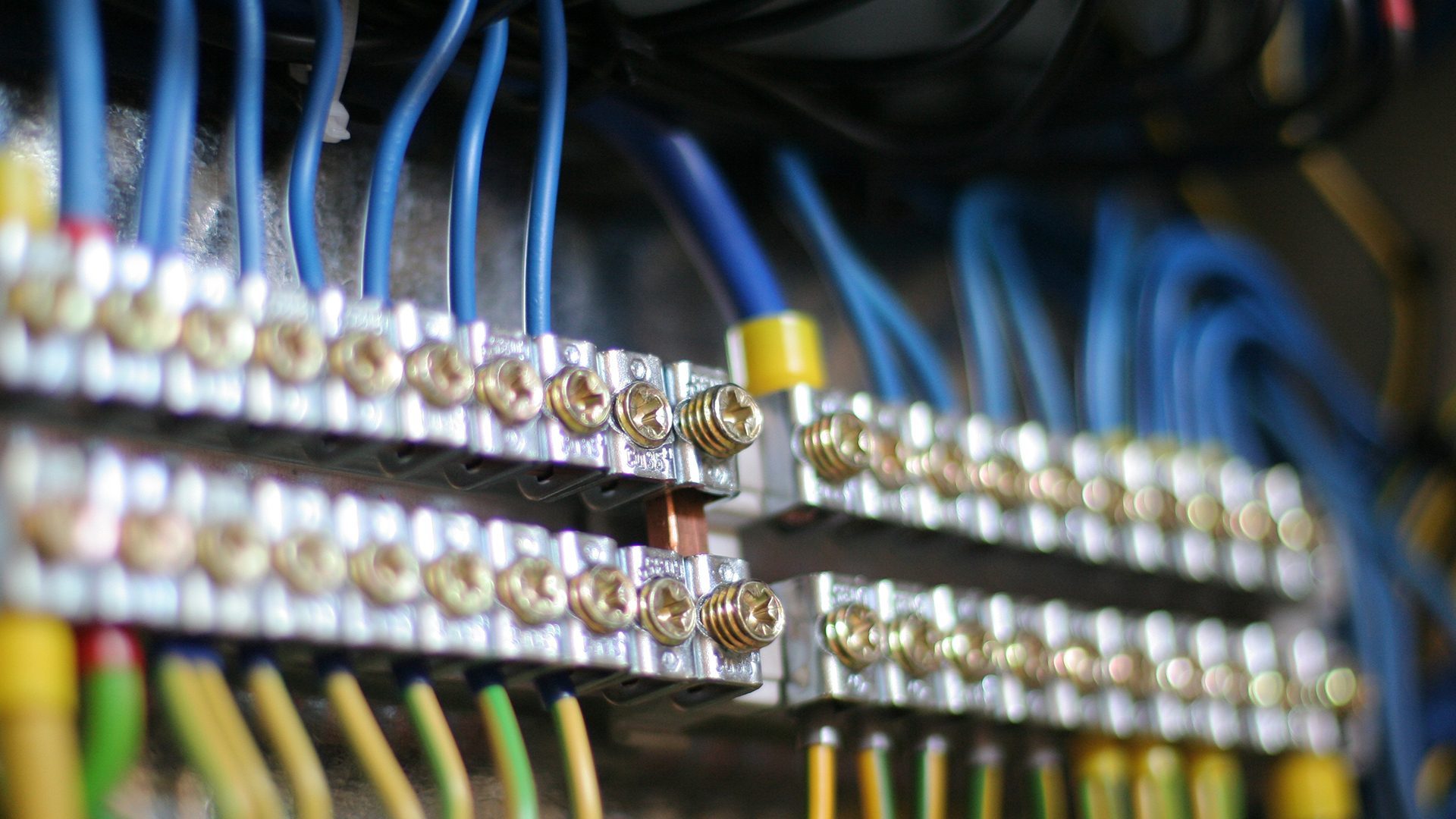PAT Testing
Portable Appliance Testing popularly called PAT Testing is a routine test carried out on electrical appliances to verify their current health and certify that they are being properly maintained and are safe for use within that environment. The Institution of Engineering and Technology categorizes electrical appliances that can be PAT tested into five (5) classes;
Class I Equipment: identified by the earth or protective earth symbol. E.g. Kettles, Toasters, Irons, Microwaves, Electric Heaters, etc.
Class II Equipment: identified by the double square symbol and will receive an insulation test. E.g. Televisions, Lamps etc.
Class III Equipment: identified by the diamond shaped square with “III” inscribed within. E.g. low energy light bulbs etc.
Information Technology Equipment (IT): E.g. computers, printers and servers among others.
Appliances with Detachable Cables: The cable is tested separately and then with the appliance.
The reason for the PAT testing is to reduce the risk of accidental fire outbreaks stemming from a faulty appliance. PAT Testing is done in two stages;
- A physical inspection of the appliance and its cables, checking for damages to the plugs, wires and chassis, as well as inspection of the fuse for proper rating.
- After the physical inspection, there are detailed electrical tests carried out on the appliance. A PAT Tester device is used for the electrical tests. Each electrical appliance is tested and labeled with pass or fail. Appliances that failed the test will be removed and worked on or replaced entirely.

PAT Testing is a mandatory requirement for every building whether commercial or residential within the UK. Legislation such as the Health and Safety at Work etc Act 1974, the Electricity at Work Regulations 1989, The Electrical Equipment (Safety) Regulations 1994 and The Housing Act 2004 (England and Wales), mandate ‘duty holders’ to make their environment and electrical appliances safe for those that could be affected by mishap to that appliance in that environment. The duty holders include anyone using the appliance, those meant to maintain the appliance, the certified professional performing the PAT test and the management of the building or workplace. The government demands that businesses carry out PAT tests in their work place but the choice of the PAT tester is left to the discretion of the organization to perform the test.
For our installation Service
Call a professional today

Why is PAT Testing Necessary?
- The government mandates it, as such it is a law that ought to complied to. While there are no witch-hunts for non-compliers, if an electrical incident happened you could be in a very compromising position.
- To ensure the general safety of tenants and employees in a work place.
- For optimum performance of appliances
- You could be facing fines, civil or even criminal charges if not ensuring the safety of employees or tenants.
You should look no further than Electrics on Tap for your PAT Testing. Our very experienced team of dedicated and friendly engineers will carry out the PAT tests in line with local regulations and prevailing legislation. We employ the latest testing technologies and methods to ensure we deliver the most detailed results. And because we are your one stop electric solutions company, if we find faults we would gladly assist in replacing or fixing the appliance as is within the purview of our services.
Pat testing or portable appliance testing is an important part of any health & safety policy. The Health & Safety Executive states that 25% of all reportable electrical accidents involve portable appliances. At Electrics on tap we offer exclusive rates, please get in touch to find out.
The code of practice for in-service inspection and testing of electrical equipment details the obligations on businesses which will enable you to fully comply with the inspection and testing requirements.
The general consensus of opinion is that such equipment is either hand held whilst being connected to the supply, or is intended to be moved whilst connected to the supply, or is capable of being moved without undue difficulty whilst connected to the supply, . For further information and guidance go to https://www.pat-testing.info
Did you know that many insurance companies insist on the property having an up to date PAT Test certificate?
Request for a free quote.
Call 01273-723600 or 01903-660093 today
Electrical Services in Brighton, East Sussex
- Electrical Installations
- Additional Electrical Installations
- Home Electrial Installations
- Full House Rewiring
- Cooker & Boiler Installations
- Fuse Board Repairs
- LED Lighting Upgrades
- Lighting
- Out Door Power/Lighting
- Outdoor/Garden Appliances
- Safety and Security
- Heating Systems
- Electric Showers
- Extra Socket/Switch Fittings
- TV/Phone/Socket Wiring
- Diagnostic and Repairs
- PAT Testing
- Electrical Inspections
- All Fault Finding and Maintenance
- Landlord Certificates
Information About Brighton
- Electrics On Tap offers PAT Testing services in Brighton, East Sussex, a large town located in South East England.
- Part of the City of Brighton and Hove, Brighton forms a Unitary Authority and is part of the greater Brighton and Hove built-up area in Sussex.
- A large number of leading businesses make Brighton and East Sussex their home including Electrics On Tap.
- Brighton formerly used to be called Brighthelmstone.
- Local nicknames include Brighthelmstone & Blightey.
- Brighton incorporates a number of villages and settlements including Aldrington, Old Steine, Bevendean, Black Rock, Brunswick, Coldean and Hangleton.
- Hove, Mile Oak, Moulsecoomb, Hollingbury and Hollingdean are included withinin Electrics On Tap’s PAT Testing service area in the City of Brighton and Hove.
- Other service areas of Electrics On Tap within Brighton, Sussex include Ovingdean, Patcham, Saltdean, Rottingdean and Portslade-by-Sea,
- in addition to Brighton and Hove’s outer urban areas Woodingdean, Withdean, Westdene and West Blatchington.
- Last in order of mention, Electrics On Tap’s PAT Testing services cover the Brighton Municipality along with Stanmer, Bear Road area and Brighton Marina.
- The Brighton postcode district is the BN postcode area.
- The Sussex University and University of Brighton are respected through out the United Kingdom.
- Queen’s Park, Brighton and Preston Park, Brighton are most notable parks in Brighton and known through out England.
- Integral major roads in Brighton are the A27 road and the A23 road.
- To the West, the City of Brighton and Hove is bordered by Shoreham, Southwick, Littlehampton, Sompting, Lancing and Worthing.
- The City of Brighton is flanked to the East by Burgess Hill, Peacehaven and Lewes.

